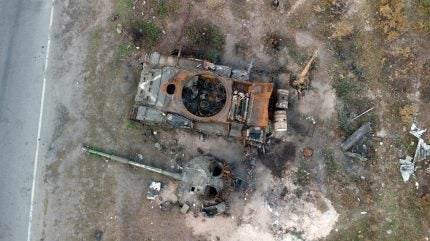
With the daily number of Russian personnel killed or wounded in action in Ukraine throughout May is understood to have averaged around 1,200 soldiers, Russia’s military could have now sustained more than half a million casualties since Moscow’s February 2022 invasion of its neighbour.
At the start of May 2024, the senior military advisor of the UK Delegation to the Organisation for Security and Co-Operation in Europe Nicholas Aucott said that Russian casualties in Ukraine had exceeded 465,000 troops.
Since then, as Russia continues to make incremental gains west of Avdiivka and opened up a new northern offensive in the Kharkiv Oblast, an average daily casualty rate has pushed the number of Russian soldiers killed or wounded in action beyond 500,000.
Despite these losses, it is understood that Russia still retains the ability to recruit approximately 30,000 new personnel each month, making its losses, even those experienced in May, sustainable.
In February 2024, at the two-year anniversary of Russia’s large-scale invasion, it was understood that combined casualty rates of Ukraine and Russia had reached 500,000.
At the time, Russia’s military casualties were thought to amount to 350,000 killed or wounded in action, losses that resulted in a series of partial mobilisation efforts by the regime of President Vladimir Putin, drawing in minimally or untrained civilians into front line combat.
In military terms, a casualty describes military personnel killed or wounded in the theatre of conflict, with a generally accepted ratio or one fatality for every three or four soldiers wounded.
Ukraine too has sustained significant losses, potentially around 200,000 killed or wounded, if projecting figures of killed and injured (estimated at more than 100,000) from the first 12 months of combat through 2023, by February 2024.
However, Ukraine has struggled with recruitment, and has removed consular services for fighting age male Ukrainian nationals living overseas in a bid to force them to return home. Some European countries have already said that they would assist Ukraine with the repatriation of Ukrainian fighting age males living in their territory.
Taking into account new understandings of Russian losses, the total combined number of military casualties in Ukraine between the two warring parties could now be as high as 700,000 in the approximate 28 months of war.
Broken down further, should the combined losses of Russia and Ukraine be as high as that, it equates to an average rate of military casualties of 25,000 per month. Of this, Russia’s potential average monthly loss reaches nearly 18,000 personnel since February 2022.
Russian figures do not include losses sustained by private military contractor organisations such as the Wagner Group, with estimates for that unit alone up to the tens of thousands as it bore the brunt of a brutal ground campaign in 2023, resulting in the infamous rebellion in June the same year which saw Wagner forces engaged in direct combat with Russian troops.
After a cessation of the rebellion was agreed, Wagner Group chief Yevgeny Prigozhin died in a plane crash in August 2023, with Wagner forces in Ukraine subsequently subsumed into regular Russian military structures.
Russia continues to press Ukraine forces
The opening of a Russian northern offensive in the Kharkiv Oblast drew little in terms of strategic gains but brought about a tactical benefit to stretch Ukraine’s troops further across the frontline. Ground conditions are conducive towards combat operations, with Russia conducting company-attacks at a number of locations.
However, it is still understood that Chasiv Yar remain a key target for Russian forces, with the town situation some kilometres west of Bakhmut, which fell in 2023 after months of urban warfare. Multiple reports indicate that Russia deployed thermobaric weapons in its efforts to take the town in recent days, with the highly controversial weapons creating an area of effect through a fuel-air detonation that sucks in surrounding oxygen.
In addition, Russian force have advanced approximately 14km west of Avdiivka, which Ukraine was forced to cede resulting from a critical shortage of weapons following the United States’ six-month security assistance hiatus.
Additional reporting by Andrew Salerno-Garthwaite.



